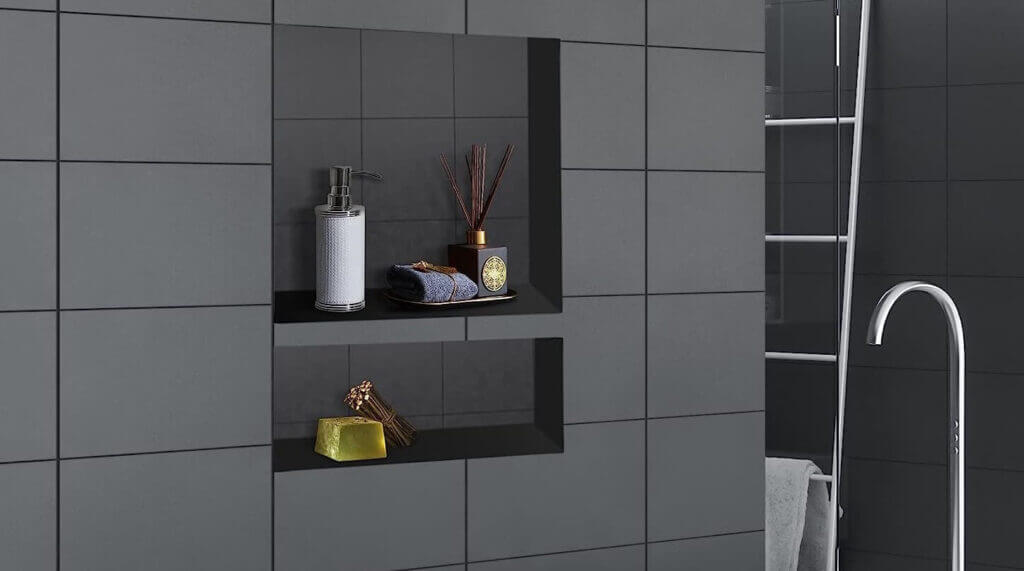Learn about branded house examples in technology, , automotive, and hospitality industries. Discover the pros and cons of a branded house and how it compares to a house of brands.
What is a Branded House?
A Branded House is a marketing strategy in which a company uses its brand name to promote all its products and services under one name. This means that all products and services offered by the company are promoted under one brand name, which is used to signify quality, reliability, and consistency.
Definition of a Branded House
In a Branded House strategy, a company uses its brand name to promote all its products and services. This strategy is also referred to as a “one-brand” strategy, as all products and services are marketed under one brand name. The brand name is used to signify quality, reliability, and consistency.
Advantages of a Branded House
There are several advantages to using a Branded House strategy. First, it helps to build brand recognition and loyalty. By promoting all products and services under one brand name, customers are more likely to remember the brand and become loyal to it. This also helps to build trust, as customers know what to expect from the brand.
Second, a Branded House strategy helps to reduce marketing costs. By using one brand name to promote all products and services, companies can save money on marketing and advertising. They don’t have to create separate marketing campaigns for each product or service, which can be costly and time-consuming.
Third, a Branded House strategy helps to create a consistent brand image. By using one brand name, companies can ensure that all products and services are perceived in the same way. This helps to create a strong brand identity and build brand equity.
Disadvantages of a Branded House
While there are several to using a Branded House strategy, there are also some . One disadvantage is that it can be difficult to introduce new products and services under the same brand name. Customers may be hesitant to try new products or services because they are used to the existing brand image.
Another disadvantage is that a Branded House strategy can be risky. If one product or service fails, it can damage the entire brand. This is because all products and services are marketed under the same brand name, so a failure in one area can reflect poorly on the entire brand.
Lastly, a Branded House strategy can be limiting. If a company wants to enter a new market or target a new audience, it may be difficult to do so under the same brand name. This is because the brand name may not resonate with the new market or audience.
Branded House Examples in the Technology Industry
When it comes to branding in the technology industry, there are some companies that have truly mastered the art. Apple, Samsung, and Microsoft are three of the best examples of branded houses in the tech world.
Apple
Apple is perhaps the most well-known tech company in the world, and for good reason. The company has built an incredibly strong brand over the years, with a focus on design, innovation, and simplicity. Everything from its products to its marketing campaigns is carefully crafted to reflect this brand identity.
One of the key advantages of Apple’s branded house approach is that it allows the company to create a seamless experience for its customers. From the packaging of its products to the design of its retail stores, everything is consistent and recognizable as an Apple product.
Another advantage of Apple’s branded house approach is that it allows the company to charge a premium for its products. Customers are willing to pay more for Apple products because they know they are getting a high-quality, well-designed product that reflects the company’s brand values.
Samsung
Samsung is another example of a company that has built a strong branded house in the technology industry. While Apple focuses on design and simplicity, Samsung’s brand is all about innovation and cutting-edge technology.
One of the advantages of Samsung’s branded house approach is that it allows the company to be seen as a leader in the tech industry. Samsung is known for pushing the boundaries of what is possible with technology, and this is reflected in everything from its products to its marketing campaigns.
However, one of the disadvantages of Samsung’s branded house approach is that it can be difficult to differentiate its products from those of its competitors. While Apple’s products are instantly recognizable as Apple products, Samsung’s products can sometimes get lost in the sea of other tech products on the market.
Microsoft
Microsoft is a company that has undergone a major rebranding in recent years, shifting its focus from traditional software to the cloud and other emerging technologies. As part of this rebranding, the company has also adopted a more cohesive branded house approach.
One of the advantages of Microsoft’s branded house approach is that it allows the company to create a more unified experience for its users. Whether you are using Windows, Office, or any other Microsoft product, the experience is consistent and reflects the company’s brand values.
However, one of the challenges of Microsoft’s branded house approach is that it can be difficult to change perceptions of the company. Many people still associate Microsoft with outdated software and clunky user interfaces, even as the company is working to shed this image and embrace new technologies.
Overall, these three examples demonstrate the power of a well-executed branded house approach in the technology industry. By focusing on a clear brand identity and consistent messaging, companies like Apple, Samsung, and Microsoft are able to build strong relationships with their customers and stay ahead of the competition.
Branded House Examples in the Fast Food Industry
Fast food is a highly competitive industry, and brand recognition is key to success. A branded house is a strategy where a company uses a single brand name for all of its products and services. In the fast food industry, some of the biggest players are McDonald’s, Subway, and KFC. Let’s take a closer look at each of these examples.
McDonald’s
McDonald’s is the largest fast-food chain in the world, with over 38,000 locations in more than 100 countries. The company was founded in 1955 by Ray Kroc and has since become an icon of American culture. McDonald’s is a great example of a branded house because it uses its name for everything from burgers and fries to salads and breakfast items.
One of the advantages of a branded house strategy is that it creates a strong brand identity. McDonald’s is instantly recognizable by its golden arches logo, which is one of the most well-known logos in the world. This recognition helps McDonald’s attract customers who are familiar with the brand and trust its products.
Another advantage of a branded house is that it allows for easier brand extensions. McDonald’s has been able to successfully introduce new products, such as the McRib sandwich and the Filet-O-Fish, because customers already trust the McDonald’s brand. This makes it easier for McDonald’s to introduce new products without having to spend as much money on marketing.
However, there are also disadvantages to the branded house strategy. One of the biggest disadvantages is that if the brand is tarnished, it can have a negative impact on all of the products associated with that brand. For example, if McDonald’s were to experience a major food safety issue, it could cause customers to lose trust in the brand and avoid all McDonald’s products.
Subway
Subway is a fast-food chain that specializes in sandwiches and salads. The company was founded in 1965 and has since grown to over 44,000 locations in more than 100 countries. Subway is a great example of a branded house because it uses its name for all of its products.
One of the advantages of a branded house strategy is that it creates a consistent brand image. Subway is known for its fresh ingredients and its ability to customize sandwiches to each customer’s liking. This consistency helps to build trust with customers and encourages repeat business.
Another advantage of a branded house is that it can help to reduce marketing costs. Subway has been able to rely on its brand recognition to attract customers, which means that it doesn’t have to spend as much money on advertising as other fast-food chains.
However, there are also to the branded house strategy. One of the biggest disadvantages is that it can make it difficult to introduce new products. Subway has struggled in recent years to keep up with changing consumer tastes, and it has been slow to introduce new and innovative products.
KFC
KFC, also known as Kentucky Fried Chicken, is a fast-food chain that specializes in fried chicken. The company was founded in 1952 and has since grown to over 24,000 locations in more than 145 countries. KFC is a great example of a branded house because it uses its name for all of its products.
One of the of a branded house strategy is that it can create a sense of nostalgia and familiarity for customers. KFC has been around for over 60 years, and many customers have fond memories of eating KFC as children. This nostalgia can help to build brand loyalty and encourage repeat business.
Another advantage of a branded house is that it can help to simplify the decision-making process for customers. When customers see the KFC logo, they know exactly what they are going to get: fried chicken. This simplicity can be attractive to customers who are looking for a quick and easy meal.
However, there are also disadvantages to the branded house strategy. One of the biggest disadvantages is that it can make it difficult to differentiate between products. KFC has struggled in recent years to keep up with competitors who are offering more diverse menus with healthier options.
Table:
| Fast Food Chain | Branded House Strategy |
|---|---|
| McDonald’s | Yes |
| Subway | Yes |
| KFC | Yes |
Branded House Examples in the Fashion Industry
Nike, Adidas, and Under Armour are three of the most well-known brands in the industry. Each of these companies has established a strong brand identity and has become a household name across the globe. In this section, we will discuss their branding strategies and how they have become successful in the fashion industry.
Nike
Nike is a leading athletic wear brand that has become synonymous with high-performance sports apparel. The company has a simple yet powerful mission statement, “To bring inspiration and innovation to every athlete in the world.” This statement has helped Nike establish a strong brand identity that focuses on innovation, performance, and inspiration.
One of Nike’s most successful branding strategies is its iconic “swoosh” logo, which is recognized worldwide. The logo is simple yet memorable and has become a symbol of the brand’s quality and excellence. Nike’s branding also focuses heavily on its sponsored athletes, such as Michael Jordan and LeBron James, who are seen as role models for aspiring athletes around the world.
Adidas
Adidas is a German sportswear brand that has been around since 1949. The company has a strong focus on innovation and has established itself as a leader in the athletic wear industry. Adidas’ branding strategy is built around its three-stripe logo, which is recognized worldwide and has become a symbol of quality and performance.
Adidas’ branding also focuses heavily on its sponsored athletes, such as Lionel Messi and James Harden, who are seen as role models for aspiring athletes around the world. The company has also established a strong social media presence, leveraging platforms like Instagram and Twitter to connect with its audience and build brand awareness.
Under Armour
Under Armour is a relatively new player in the fashion industry, having been founded in 1996. The company has focused heavily on innovation and has established itself as a leader in the performance apparel market. Under Armour’s branding strategy is built around its “Protect This House” slogan, which emphasizes the company’s commitment to innovation, performance, and protection.
Under Armour has also established a strong social media presence, leveraging platforms like Instagram and Twitter to connect with its audience and build brand awareness. The company’s branding also focuses heavily on its sponsored athletes, such as Stephen Curry and Tom Brady, who are seen as role models for aspiring athletes around the world.
Overall, Nike, Adidas, and Under Armour are three of the most successful brands in the industry. Each of these companies has established a strong brand identity and has become a household name across the globe. By focusing on innovation, performance, and inspiration, these brands have been able to differentiate themselves from their competitors and establish themselves as leaders in the industry.
Branded House Examples in the Automotive Industry
The automotive industry is a highly competitive market where companies strive to distinguish themselves from one another through branding. A branded house strategy is commonly used by companies in this industry, where the company’s name is the brand and all products fall under that brand umbrella. This is a popular strategy due to its ability to promote brand recognition and loyalty. In this section, we will discuss three examples of branded house strategies in the automotive industry: Toyota, Ford, and BMW.
Toyota
Toyota is one of the world’s largest automobile manufacturers and is known for its reliable, high-quality vehicles. Toyota has a strong branded house strategy, with all of its products falling under the Toyota brand. This strategy has served the company well, as the Toyota brand is recognized and trusted by consumers worldwide. Toyota’s brand is known for its reliability, safety, and innovation. The company has a wide range of products, including cars, trucks, and SUVs, all of which fall under the Toyota brand.
Ford
Ford is another major player in the automotive industry and is known for its American-made vehicles. Ford has a strong branded house strategy, with all of its products falling under the Ford brand. The company’s brand is known for its durability, toughness, and innovation. Ford’s product line includes cars, trucks, SUVs, and commercial vehicles, all of which fall under the Ford brand. This strategy has helped Ford establish a strong brand identity and has contributed to the company’s success in the industry.
BMW
BMW is a luxury car manufacturer that is known for its high-performance vehicles. BMW has a strong branded house strategy, with all of its products falling under the BMW brand. The company’s brand is known for its innovation, quality, and performance. BMW’s product line includes cars, SUVs, and motorcycles, all of which fall under the BMW brand. This strategy has helped BMW establish a strong brand identity in the luxury car market and has contributed to the company’s success.
Branded House Examples in the Hospitality Industry
When thinking about the hospitality industry, there are a few big names that come to mind. Hilton, Marriott, and Intercontinental Hotel Group (IHG) are all examples of successful branded houses. Let’s take a deeper look at each of these companies and what makes them stand out.
Hilton
Hilton is one of the largest hotel chains in the world, with over 6,100 properties spanning 118 countries. One of the key advantages of the branded house model for Hilton is the instant recognition and trust that comes with the Hilton name. Guests know that they can expect a certain level of quality and consistency when they book a stay at a Hilton property.
Another advantage for Hilton is the ability to cross-promote their different brands. Hilton has a range of brands that cater to different price points and target markets, including luxury brands like Waldorf Astoria and Conrad, as well as more budget-friendly options like Hampton Inn and Tru by Hilton. By leveraging the power of the Hilton name, they are able to attract a wider range of guests across their different properties.
Of course, there are some disadvantages to the branded house model as well. One potential downside is the risk of brand dilution. If Hilton were to expand too rapidly or start offering too many different brands, they could risk diluting the trust and recognition that comes with the Hilton name. Additionally, if there were to be a major scandal or issue at one Hilton property, it could potentially tarnish the reputation of the entire brand.
Marriott
Marriott is another major player in the hospitality industry. With over 7,000 properties in 131 countries, Marriott is the largest hotel chain in the world by number of properties. Like Hilton, Marriott has a range of different brands that cater to different types of travelers, including luxury brands like Ritz-Carlton and St. Regis, as well as more affordable options like Courtyard and Fairfield Inn.
One advantage of the branded house model for Marriott is the ability to leverage the power of their loyalty program, Marriott Bonvoy. With over 147 million members, the loyalty program is a key driver of repeat business for Marriott. By offering perks like free nights, room upgrades, and exclusive experiences to members, Marriott is able to build strong brand loyalty and keep customers coming back.
However, there are also some potential disadvantages to the branded house model for Marriott. One challenge is maintaining consistency across all of their different brands and properties. With so many different properties and brands, it can be difficult to ensure that every guest has a consistent experience, which could potentially impact the overall reputation of the Marriott brand.
Intercontinental Hotel Group
Intercontinental Hotel Group (IHG) is a British multinational hotel company that owns and operates over 5,900 hotels across 100 countries. IHG has a range of different brands, including luxury brands like InterContinental and Kimpton, as well as more affordable options like Holiday Inn and Candlewood Suites.
One advantage of the branded house model for IHG is the ability to leverage the power of their loyalty program, IHG Rewards Club. With over 100 million members, the loyalty program is a key driver of repeat business for IHG. By offering perks like free nights and room upgrades to members, IHG is able to build strong brand loyalty and keep customers coming back.
However, there are also some potential disadvantages to the branded house model for IHG. One challenge is maintaining consistency across all of their different brands and properties. With so many different brands and properties, it can be difficult to ensure that every guest has a consistent experience, which could potentially impact the overall reputation of the IHG brand.
Overall, the branded house model has been successful for many companies in the hospitality industry, including Hilton, Marriott, and IHG. By leveraging the power of a strong brand name, these companies are able to attract a wider range of guests and build strong brand loyalty. However, there are also some potential challenges and risks to this model, including the risk of brand dilution and the challenge of maintaining consistency across different brands and properties.
Branded House vs House of Brands
Branding is an essential strategy that businesses use to distinguish themselves from their competitors. There are two main types of branding strategies: branded house and house of brands. Each strategy has its and , and understanding the difference between the two is essential to make an informed decision.
Definition of a House of Brands
A house of brands is a branding strategy where a company markets and sells a range of products or services under different brand names. In this strategy, each brand operates independently and has its unique identity, marketing, and advertising campaigns. The company behind the brands is relatively unknown, and customers are not aware of the parent company’s existence.
Advantages of a House of Brands
One of the primary advantages of a house of brands is that it allows companies to target different market segments with tailored products and services. Each brand can have a unique identity, message, and marketing campaign, which resonates with its target audience. This strategy also enables companies to expand their market share and reach new customers without diluting their existing brands’ value.
Another advantage of a house of brands is that it provides companies with the flexibility to adapt to different market conditions. If a brand is not performing well, the company can discontinue it without affecting the other brands. This strategy also helps companies to mitigate risks because a failure of one brand does not impact the entire company.
Disadvantages of a House of Brands
One of the primary disadvantages of a house of brands is that it requires significant resources to manage and market multiple brands. Each brand needs its marketing campaign, advertising, and sales team, which increases the overall cost of the business. This strategy also requires a considerable investment in research and development to create unique products and services that appeal to different target markets.
Another disadvantage of a house of brands is that it can lead to brand confusion and cannibalization. Customers may not be aware of the relationship between the different brands, and this can lead to confusion and a lack of brand loyalty. Additionally, if the different brands are too similar, they may compete with each other, cannibalizing each other’s sales and reducing the overall profitability of the company.
In conclusion, both branded house and house of brands are effective branding strategies, and businesses need to choose the strategy that aligns with their goals and resources. A house of brands provides companies with the flexibility to target different market segments and adapt to market changes, but it requires significant investment and can lead to confusion and cannibalization.








